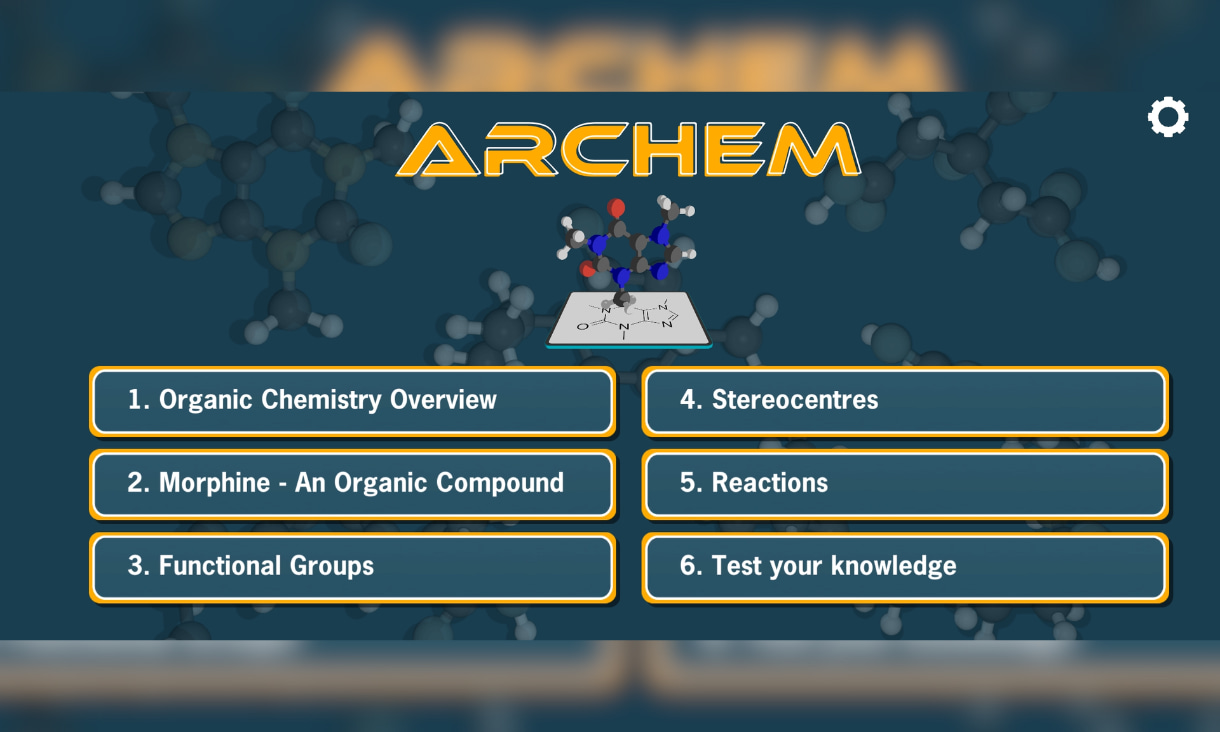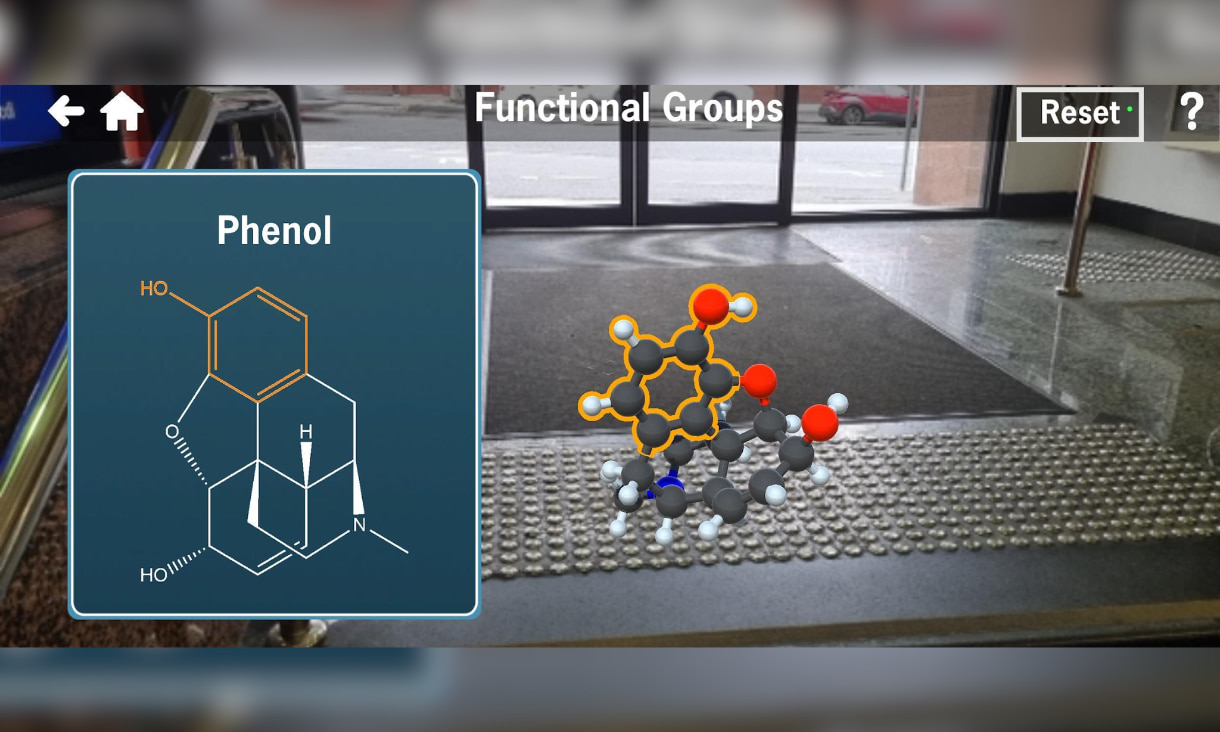Professors Michelle Spencer and Oliver Jones have created an app called ARChem to bring chemistry out of textbooks and into the 3D world.
Professor Michelle Spencer is the Deputy Director of the STEM Centre for Digital Innovation, and a professor of Chemistry and Professor Oliver Jones is a professor of analytical chemistry in the School of Science.
The academics designed ARChem so that chemistry students could engage with the material they are learning in the classroom in a fun and different way.
"Students often struggle with relating the 2D representation of molecules with their 3D shape," Michelle said.
"By using augmented reality, molecules can be placed wherever you are located and can be manipulated in different ways."
The app is designed to work as a learning tool during or outside of class time, complimenting existing teaching materials and elements of classroom learning, by reinforcing key topics covered in undergraduate chemistry courses.
 The app, designed by Michelle Spencer and Oliver Jones, aims to compliment the studies of undergraduate chemistry students. Source: Google Play Store
The app, designed by Michelle Spencer and Oliver Jones, aims to compliment the studies of undergraduate chemistry students. Source: Google Play Store
"In our app, students can select different parts of a molecule (called functional groups or stereocentres) and see how they are represented in 2D compared to 3D," Oliver said.
"Our hope is that this will make it easier for students to grasp the 3D structure of molecules which is essential to their properties and how they react."
The creation of the app began with a successful Australian Council for Deans of Science (ACDS) Learning & Teaching grant.
"The creation of the app was truly multi-disciplinary, including staff and students from both the STEM College, STEM Centre for Digital Innovation and the College of Design and Social Context," Michelle said.
"Importantly, we had a students centred design process right from the start, with students involved in every step of the way.
"This included students studying chemistry, as well as teams of computer programming students studying Bachelor of Computing Technologies and Masters of Animations, Games and Interactivity (MAGI)."
This student-centred partnership model provided a valuable opportunity for the students involved to work on a product that they could then use as evidence for their learning to prospective employers.
"This model is something we developed when we created our first apps Chirality and Chirality-2," Oliver said.
"This approach provides a win-win situation, where we, as academics, get a tool at the end that we use in our teaching; the students learn to work in groups on a 'real' project with a tangible output."
Feedback on the app so far has been positive with students saying they've enjoyed playing with the 3D augmented reality aspect and being able to play wherever they are.
 ARChem uses augmented reality to bring 2D models of molecules into the 3D world and aims to make it easier for students to grasp key topics in their chemistry coursework. Source: Google Play Store.
ARChem uses augmented reality to bring 2D models of molecules into the 3D world and aims to make it easier for students to grasp key topics in their chemistry coursework. Source: Google Play Store.
"Students are always using mobile phones to communicate, listen to music, etc. and many have long commutes to RMIT... Why not spend the travel time learning rather than doom scrolling on TikTok?" Michelle said.
"Being free and able to be played without internet, we've endeavoured to make the app as accessible as possible... this provides students with flexibility and autonomy in their learning."
ARChem is available to download for free on the Apple and Google Play Stores.
Story by: Sheridan van Gelderen






